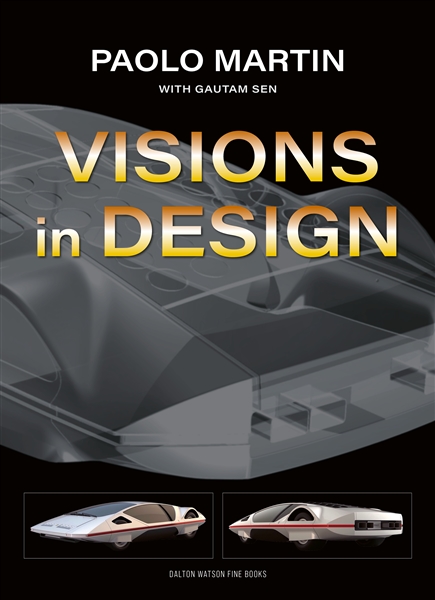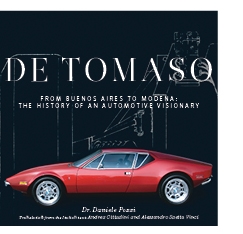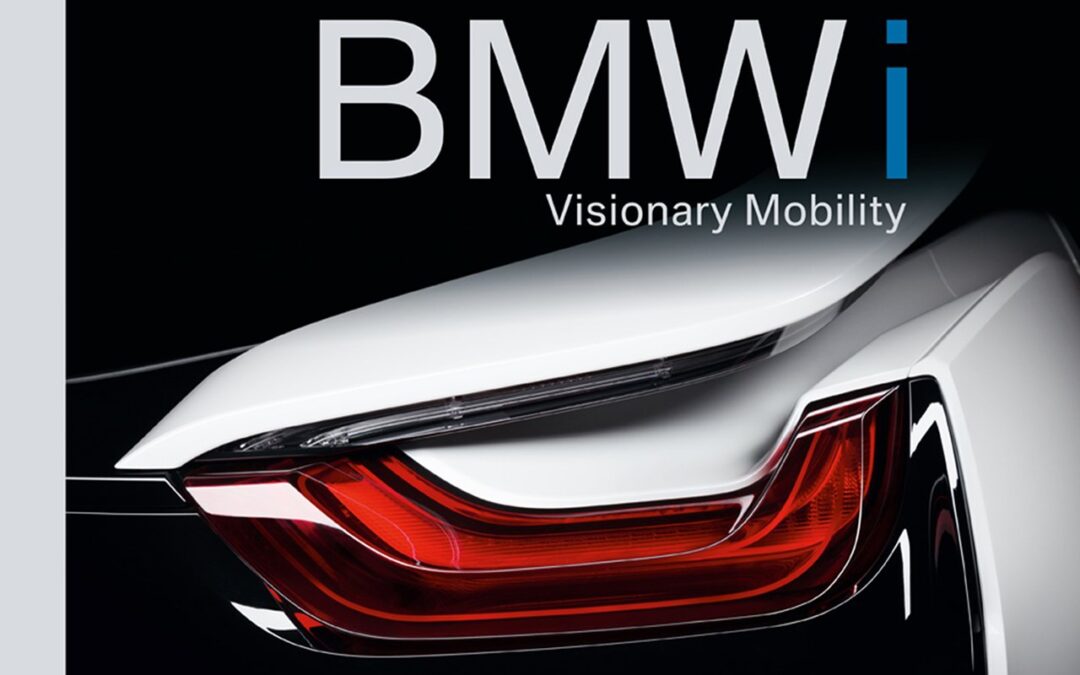
In the spring of 2008, a think tank of engineers, designers, trend researchers, and financial experts met on a factory floor of BMW’s parent plant in Munich to rethink mobility for a world of dwindling resources. Providing extensive insight into BMW’s workshop of ideas, this volume traces the venture’s design history and looks to the future of sustainable cars.
Grappling with major challenges of our time—from climate change to megacities and the scarcity of resources—contributors imagine solutions taking shape through technological innovations, networked mobility, sustainability in production, and the use of renewable materials. A unique look behind the scenes, this volume opens a window onto BMW’s complete development process, from initial conception to world premiere, presenting models for everything from plug-in hybrids with eucalyptus wood interiors to full-electric, self-driving cars. Replete with close-up photographs and fascinating model drawings, BMW i is a must-have for lovers of modern design and automobiles and for anyone interested in electro-mobility and sustainable technologies.
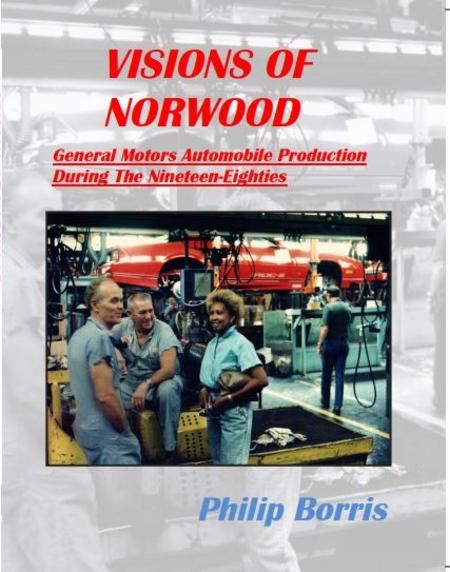
The book that goes inside a General Motors Corporation Automotive Assembly Plant in step by step process sequence showing factory floor and the assembly methods utilized during the 1980’s – all in unparalleled detail.
A Visual delight featuring a combined 651 pictures and illustrations!
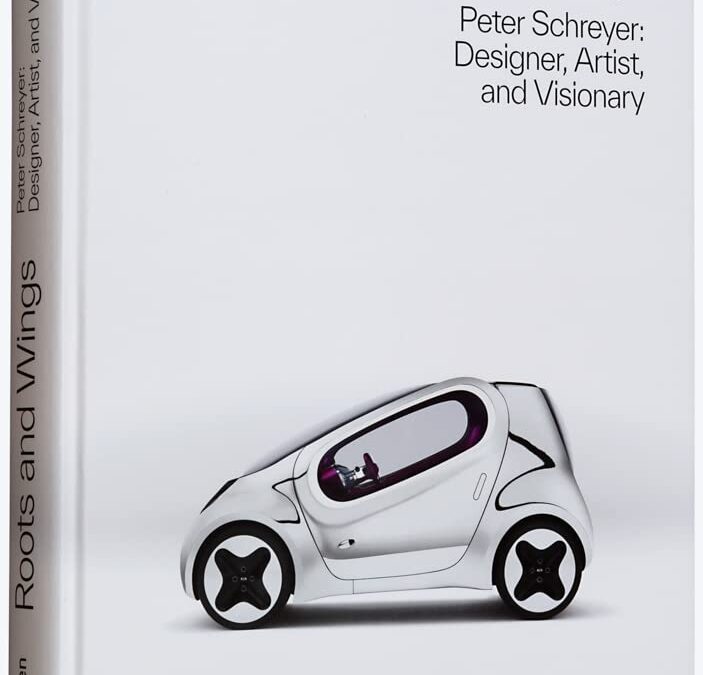
Roots and Wings explores the life and work of Peter Schreyer, one of the most influential car designers of our time. A Renaissance man with an eye for detail and foresight for innovation, he geared himself toward success. Responsible for the births of some of the 20th-century’s most iconic cars, his industry experience brought instant classics to the road. From humble beginnings in Germany’s divided south to his new base in Seoul, Schreyer embodies a conduit between the west and east―bridging his homeland’s history of automotive design with South Korea, a country that has experienced stratospheric growth on the world stage in just a few decades. Looking at the formative moments and pivotal artistic discoveries that shaped his creative mindset, Roots and Wings is the never-before-told story of how a man reimagined a car brand and left a mark on history in the process.
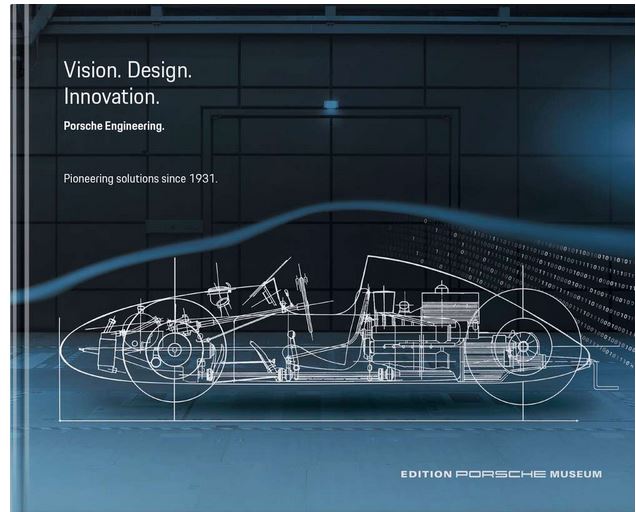
In 1931 Ferdinand Porsche started his own business in a rented office in Stuttgart’s Kronenstrasse thus laying the foundation for today’s Porsche brand. Since then, the name Porsche has been closely associated with development projects for customers worldwide. Porsche Engineering continues this tradition with innovative solutions and a high level of digitalization expertise in an international network of locations.
Technical details:
Edition Porsche Museum
Format: 29.5 x 24 cm, Hardcover
Pages: 240
Illustrations: 140
Language: English
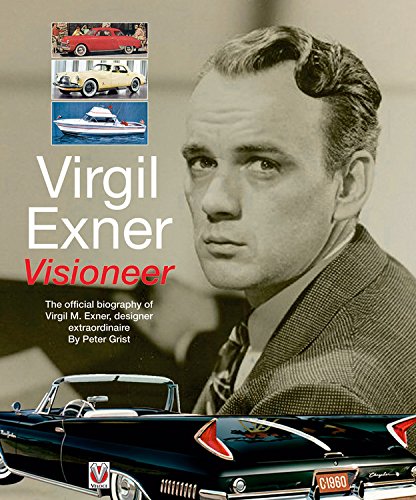
The story of a man that brought his own personal style to the world of industrial design, from automobiles to powerboats. Some 50 years after his design masterpieces wrested styling leadership away from General Motors – Harley Earl. Thirty four years after his untimely death, Virgil Exner’s name still remains inexorably linked to the Chrysler Corporation in the minds of car enthusiasts worldwide.
For an all too brief period, Exner’s name epitomised all that was great and exciting in America. His thrilling automobile designs from the mid-fifties took the world by storm and put Chrysler at the top. His work was nothing less than a revolution. Until the mid-fifties, engineers, creating cars that were reliable but invariably staid and conservative, had dominated auto design. Exner introduced to Chrysler, firstly with his ‘idea cars’ then with production models, vehicles that were wanted for their looks but at the same time, were soundly engineered; automobiles that carried classic proportions and gave the illusion of movement even whilst stationary. His design of the 1947 Studebaker established the design pattern for all modern cars and was a huge success. Along with automobile styling, his talents stretched to many other areas of industrial design, from trains to trucks and boats to Buicks.
This book gets behind the character of the man, his strengths and weaknesses, his personal tragedies and his vision of modern transport. Uncover why he set up in competition with Raymond Loewy, get the real facts behind historic inaccuracies and why he was made scapegoat for the sales disaster of the early sixties, Then delight in his fine artwork and his love of motor racing. With many previously unseen works of art and family photos among the 150 colour images throughout this is a unique and fascinating insight into a pivotal player in the development of the modern automobile.

Ever wondered how many aircraft were converted into Japanese Zeroes and torpedo bombers for Tora! Tora! Tora! or how French Gazelle helicopters were modified for the title role in Blue Thunder? This first of its kind reference book lists aircraft featured in 350 films and television shows, providing brief individual histories, film locations, serial numbers and registrations. Aircraft are also cross-referenced by manufacturer. Appendices provide brief bios on pilots and technicians, information on aircraft collections owned by Tallmantz Aviation and Blue Max Aviation and film credits for U.S. aircraft carriers.

The story of a man that brought his own personal style to the world of industrial design, from automobiles to powerboats. Some 50 years after his design masterpieces wrested styling leadership away from General Motors – Harley Earl. Thirty four years after his untimely death, Virgil Exner’s name still remains inexorably linked to the Chrysler Corporation in the minds of car enthusiasts worldwide.
For an all too brief period, Exner’s name epitomised all that was great and exciting in America. His thrilling automobile designs from the mid-fifties took the world by storm and put Chrysler at the top. His work was nothing less than a revolution. Until the mid-fifties, engineers, creating cars that were reliable but invariably staid and conservative, had dominated auto design. Exner introduced to Chrysler, firstly with his ‘idea cars’ then with production models, vehicles that were wanted for their looks but at the same time, were soundly engineered; automobiles that carried classic proportions and gave the illusion of movement even whilst stationary. His design of the 1947 Studebaker established the design pattern for all modern cars and was a huge success. Along with automobile styling, his talents stretched to many other areas of industrial design, from trains to trucks and boats to Buicks.
This book gets behind the character of the man, his strengths and weaknesses, his personal tragedies and his vision of modern transport. Uncover why he set up in competition with Raymond Loewy, get the real facts behind historic inaccuracies and why he was made scapegoat for the sales disaster of the early sixties, Then delight in his fine artwork and his love of motor racing. With many previously unseen works of art and family photos among the 150 colour images throughout this is a unique and fascinating insight into a pivotal player in the development of the modern automobile.
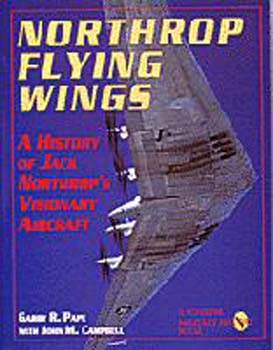
This book is an in-depth study covering John K. “”Jack”” Northrop’s quest for a clean flying machine. Covered are: Northrop’s initial N-1M project, the N-9M, XP-56, through the B-35 project, B-49 project, and the huge bombers planned only on the drawing board.Included are over 300 black and white and color photographs, as well as drawings and statistical data on all of the Northrop flying wing and tailless aircraft. Garry Pape is also the author of Queen of the Midnight Skies: The Story of American’s Air Force Night Fighters.
A Vision of Future Space Trans

Henry Ford and George Washington Carver had a unique friendship and a shared vision. This book details their paths to “green” manufacturing and the start of the chemurgic movement in America. It covers a number of little known projects such as their efforts to use ethanol as a national fuel, the use of soybeans for plastic production, and the use of waterpower for factories. This study of their collaboration shows how capitalism can drive the green movement and expand American industry.

Architect John Parkinson died in 1935, and the Los Angeles Times praised him: “Future generations have only to walk through the streets of Los Angeles to be reminded how much John Parkinson in his lifetime contributed to the city that grew up under his hand.” In Iconic Vision: John Parkinson, Architect of Los Angeles, author Stephen Gee proves that this singular visionary created the look of America’s most dynamic metropolis, long before the world recognized the city’s importance. Consider that among more than four hundred buildings in the City of Angels that carried his architectural imprimatur, John Parkinson designed:
- Los Angeles City Hall, the most iconic building in California, the tower that changed a futuristic city’s skyline forever;
- Bullock’s Wilshire, the towering structure that rivals the Chrysler Building as America’s premier Art Deco edifice;
- Los Angeles Memorial Coliseum, the world’s only modern stadium to host two Olympic Games, 1932 and 1984–and still home to the USC Trojans;
- Los Angeles Union Station, the Mission-Moderne-Art Deco masterpiece that brought together California’s railroads and became a legend before the first trains roared in.
Iconic Vision, the first biography of the master architect, documents–in remarkable detail and images–Parkinson’s monumental contributions to the city he loved. Although other architects’ names have become synonymous with the city, John Parkinson designed more landmark buildings in Los Angeles than any other architect, living or dead. And, while other architects may have taken credit for Parkinson’s designs, Stephen Gee’s penetrating biography establishes the truth. He tells the story of a man who envisioned tomorrow.
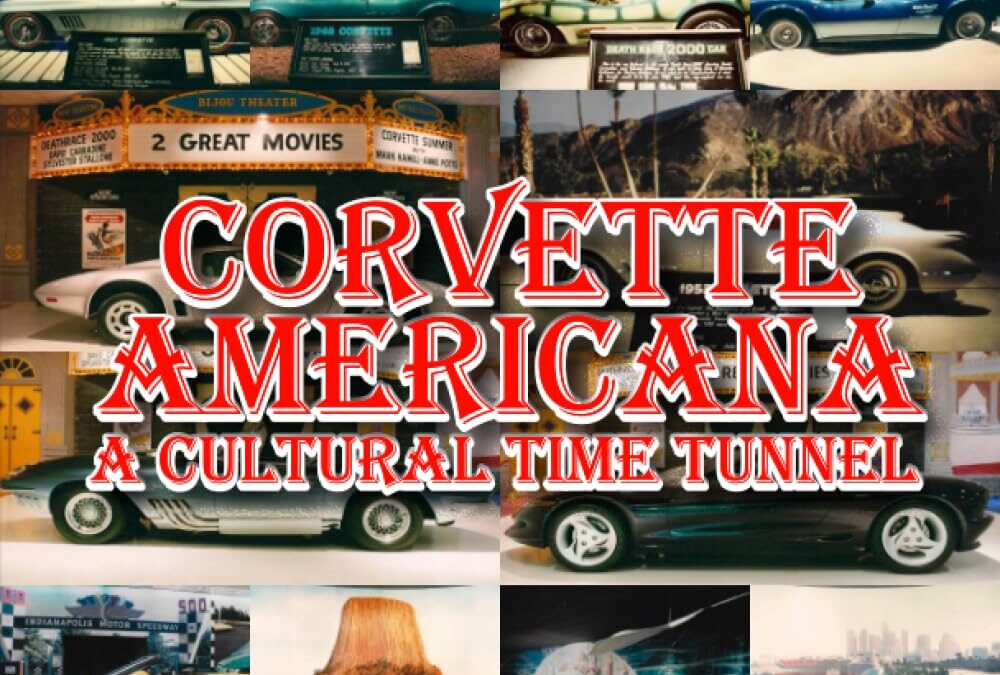
Allen Schery is perhaps the first Anthropologist to have designed a Car Museum. Prior to his design we generally only see rows of cars with small signs. Allen’s unique idea was to place each car in a set featuring a giant 15 x 30-foot photo mural that utilized a curved dioramic wall to give a 3-D effect incorporating a symbol of American Culture as a backdrop. Allen then took several trips around America logging in some 20,000 miles of trips procuring pictures of Mt. Rushmore, Niagara Falls, The Golden Gate Bridge, the Alamo, and other well-known American Landmarks. Each set featured real earth scenes and stage lighting. The Corvette was used as a time-coordinated symbol of American Culture to anchor the exhibit. He then theorized that as the original owner of each car placed the key in the ignition he was surrounded by the culture of a bygone year of Americana. He sought to recreate the sights. sounds and memories of that bygone culture by using the music, television, and movie snippets of that year along with slides of news events and time-coordinated artifacts. The Museum won many awards as well as being chosen as one of the ten best museums in New York State. Each room became a time capsule to that year with the entire museum a giant time tunnel.
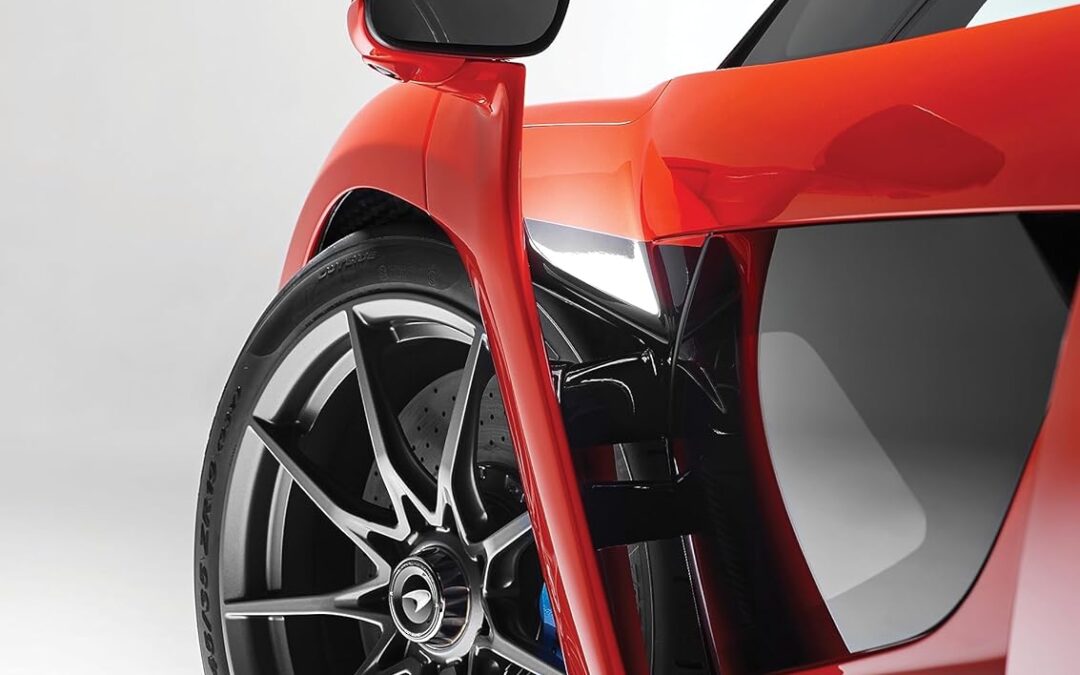
The definitive illustrated history of the exotic sports cars and supercars of McLaren Automotive.
When the McLaren Formula 1 team set up McLaren Cars and launched the revolutionary, iconic F1 road car in 1992, it turned the supercar world upside down. McLaren wouldn’t make another road car itself until it formed McLaren Automotive in 2010. It was set up with the vision not just to rival the established companies in the sports and supercar marketplace, but to disrupt and to constantly innovate in its pursuit of performance.
Readers will learn the following:
• Upstart company McLaren Automotive applied Formula 1 engineering expertise, innovation, and radical thinking to create cars that quickly became benchmarks for performance, ride, and handling against long-established supercar manufacturers such as Ferrari, Lamborghini, and Porsche.
• Unparalleled insight from the designers, engineers, aerodynamicists, and test drivers who create McLaren Automotive’s cars, with modern, independent insight from test drives by automotive journalists and the author
• Detailed technical insight, background stories, and data to the creation, development, and manufacture of all of McLaren Automotive’s sensational cars, with the text supported by comprehensive data tables and illustrated by images from a team of world-renowned automotive photographers
This book contains incredible insight and detail from access to McLaren’s press archives, as well as interviews with countless key people within the company. The first and only book dedicated entirely to McLaren’s incredible road cars, this is the complete history of a fascinating automotive brand that’s challenged the establishment.
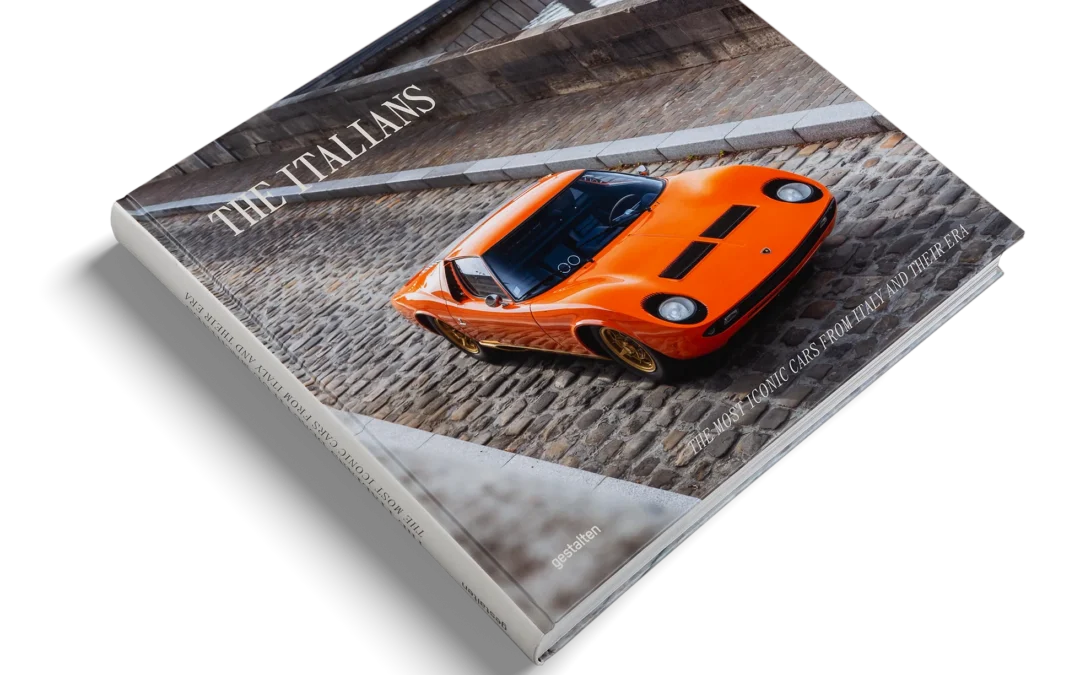
Italy is the homeland of “La Bella Macchina” and the cradle of automotive culture. This book celebrates the most iconic cars and visionary designers from the peninsula.
This stunningly illustrated book takes readers on a journey through the history of Italian automotive design, showcasing some of the most iconic and beloved models from the 1920s to the early 2000s.
Delving deep into the craftsmanship and artistry of vintage automobiles, this book explores how Italian car design has been at the center of technology, culture,and creativity—and how Italian designers like Pininfarina, Zagato, Bertone, Giugiaro, Gandini, and Ghia have influenced international car designs and brands.
With striking archival and contemporary images, The Italians – Beautiful Machines reveals the fascinating stories behind some of the most famous cars from Italy and what makes them so desirable. This book uses the lens of automotive design to chart the evolution of culture over the last 100 years. The Italians – Beautiful Machines is an impactful celebration of Italian car design and its lasting influence on design and culture.

Dive into the exhilarating world of automotive legend, Enzo Ferrari. Explore the life and legacy of the man behind the prancing horse emblem. Discover the passion, innovation, and unwavering dedication that shaped the iconic Ferrari brand. Join us on a journey through the roaring engines, the racetracks, and the indomitable spirit of a visionary who forever changed the landscape of luxury automobiles.


